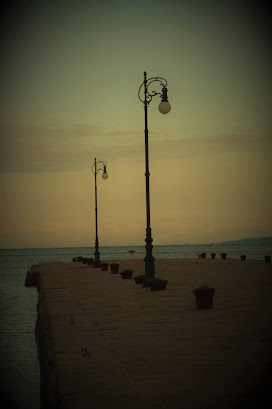‘Posing for his sexual partner as a martyred saint, Gabriele d’Annuncio was titillating himself with the image of a young man tortured and killed.’
The Pike, Lucy Hughes-Hallett’s biography of the Italian poet Gabriele d’Annuncio, is an unrivalled story of decadence and hedonism requiring, at times, a suspension of disbelief. Death, sadism and eroticism are constant and intertwining themes, to the extent that I wondered, when d’Annuncio urged young Italians into World War 1, whether he did so for the glory of Italy or for his own sexual pleasure. Hughes-Hallett has no scruples on the matter. ‘Throughout the Great War, d’Annuncio was to refer over and over again, and in increasingly exulted tones, to dead soldiers as “martyrs”, whose deaths must be honoured by the sacrifice of further beautiful youths. What had begun as an erotic fantasy shaped by an aesthetic trend would become a motive for slaughter.’ (1)
Before World War 1, Italy was a poor, politically unstable country wracked by feudal lords and mafiosi, and the exodus of families looking for a better life had already begun to give the world its plethora of Italian restaurants. (Read Christ Stopped at Eboli by Carlo Levi (2), written after Mussolini had locked away the mafia and made the trains run on time.) Abiding by a belief that war, hatred and bloodshed would strengthen it and in order to redeem territory promised to it at the Secret Treaty of London in 1915, Italy deserted its allies, Austria-Hungary and Germany, and sent its young men to World War 1 on a salary of a third of a lire per day (3). My husband’s grandfather travelled from Turin to fight on the northeastern frontier. Because he was illegitimate he was put on the front line in the hope that he would be shot first. It was not until he died in 1971 that the Italian government sent his daughter his war medals which she promptly sent back.
Italy is a strange country, held together by dreams of ancient Rome, the Renaissance and a hasty revision of its modern history textbooks. The last time I was in Turin I went for a walk along the Po and read there a series of mounted plaques glorifying the Risorgimento and the rise of the Italian military, both historical failures and examples of the importance to Italy of its own propaganda.
Indeed, what would Italy do without words? It is built entirely upon them, as The Pike proves. It is a very long book, but it is d’Annuncio’s self-styled takeover of Rijeka in 1919, surfing in on a wave of alcohol and cocaine, that concerns my study of War in the Balkans.
The answer in part was Gabriele D’Annuncio, the voice of irredentism. Irredentism was an Italian word which meant land that should be considered unredeemed Italian territory. The criteria were:
i) it had once been part of the Roman Empire,
ii) it had once been part of the Venetian Empire,
iii) a few Italians lived there,
iv) a few Slavs lived there who wanted to be Italian (my grandmother),
v) it was south of the Alps and thus its acquisition made the map of Italy look better (the South Tyrol and the western third of Slovenia).
Istria was a good fit for points i) to iv). My mother, however, felt displaced in Italy and after World War 2, took on Yugoslav citizenship. Of Istria she said, ‘We were Austrian then Austria lost the war, then we were Italian and Italy lost the war.’ These Venetian-speaking Istrians lived on the west coast in a strip so thin that my mother told me that Croatian speakers came to her village of Tar in the 1920’s to buy fish. In the days before refrigeration, they couldn't have lived very far away.
It is evident from The Pike that Gabriele D'Annuncio was a metaphorical magician. Though small and unattractive (some would call him odious and repellent) he cast his spell over countless women who didn’t like the look of him but slept with him anyway, actresses, editors, musicians, politicians, the great mass of the Italian populace and sundry minor aristocracy. His mastery with words and manipulation of emotions invariably got him what he wanted, and it’s only a shame that he didn’t live long enough to see Italy after World War 2 lose all the territory his efforts had gained it.
The war was over and d'Annuncio was 'foremost among those shaping the story of the war's end as one of Italian humiliation, Italian victimisation.' (1) In Paris, the Allies allowed Italy only temporary occupation of the Croatian coast but delayed in granting it the territory promised in the Secret Treaty of London. D'Annuncio 'swore to fight on for the cause of an Italian Dalmatia' even as Italy slumped into depression and civil war. In an ugly mood, a million and a half demobbed soldiers trained in violence filled the cities and countryside, including the elite Italian troops, the arditi. Feared by the people, these arditi were unwelcome at home, they had nothing to do, and they were itching for a fight. They and d'Annuncio were mutually attracted.
References
2. Levi, Carlo Christ Stopped at Eboli, Einaudi 1945.
5. Holbach, Maude M Dalmatia, the Land Where East Meets West, 1910. William Clowes and Sons Ltd, London.
 |
| His Most Italian City | Mysite (mwalkeristra.com) |
 |
.jpg)




.jpg)





.jpg)